Gupi Ranganathan
A site and time specific mural drawing project conceived and created for the Simmons University Trustman Gallery Anteroom Space, Boston MA, 25 March – 5 August 2019.
trans-form: a study for liminal meanderings, 2019, Video of site and time specific mural drawing project at the Simmons University Trustman Gallery Anteroom Space, Boston, 2:05. Video courtesy Gregory Burdett.
Inspired by Anni Albers’ famous line: ‘You can go anywhere from anywhere’, I used the concepts of mathematical meanders[1], and meanderings in an anteroom space over four months to investigate: Can I go from anywhere to anywhere?
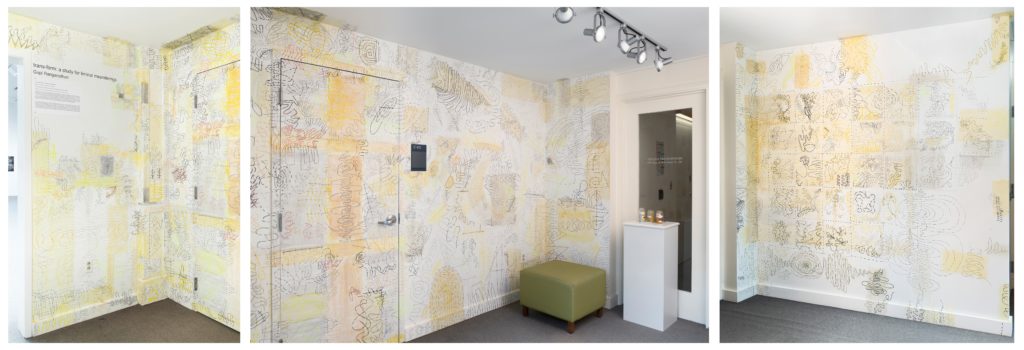
Detail shots of Walls 1, 2, and 3 that make up the anteroom space from trans-form: a study for liminal meanderings, 2019, Turmeric powder, sacred ash, slaked lime, charcoal, water, isopropyl alcohol, hydrogen peroxide, and acrylic paint markers. Image courtesy Will Howcroft.
trans-form: a study for liminal meanderings (2019) explores the process of physical and spiritual change and growth through movement in a betwixt and between space and time where grids are created and broken up, and focuses on a mark moving through space and time as meanders of orders relating to particular units of time: 2, 3, 4, 7, 11, 12, 14, 15, 24, 28, 29, 30, 31, 52 and 60.
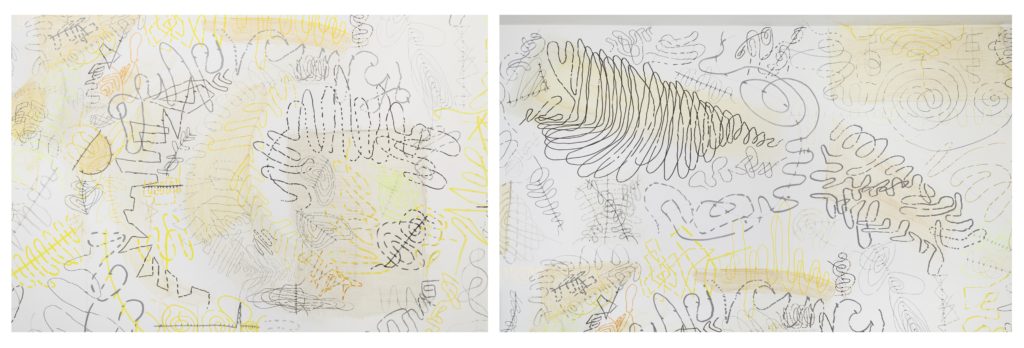
2 Detail shots from Wall 2: Close-ups of meanders, 2019, Turmeric powder, sacred ash, slaked lime, charcoal, water, isopropyl alcohol, hydrogen peroxide, and acrylic paint markers. Image courtesy Will Howcroft.
trans-form: change in composition or structure
liminal: relating to a threshold or being an intermediate state, phase, or condition
meander: a self-avoiding closed curve which intersects a line a number of times
meandering: an act of following a winding course
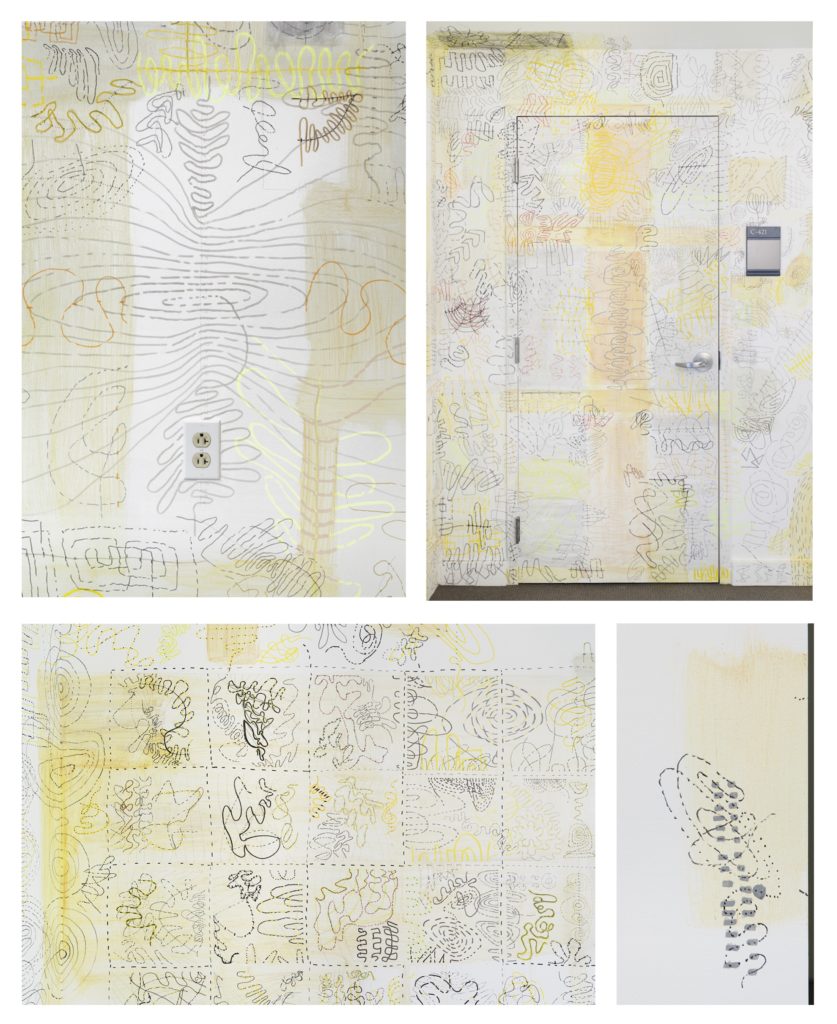
4 Detail shots: ‘What is a study?’, 2019, Turmeric powder, sacred ash, slaked lime, charcoal, water, isopropyl alcohol, hydrogen peroxide, and acrylic paint markers. Image courtesy Will Howcroft.
What is a study? Is it the devotion of time and attention to acquiring knowledge on an academic subject, especially by means of books, or a study as pursued by one person, or a detailed investigation and analysis of a subject or situation, or a thing that is or deserves to be investigated, or a room used or designed for reading, writing, or academic work, or a piece of work, especially a drawing, done for practice or as an experiment, or, is it an amusing or remarkable thing?
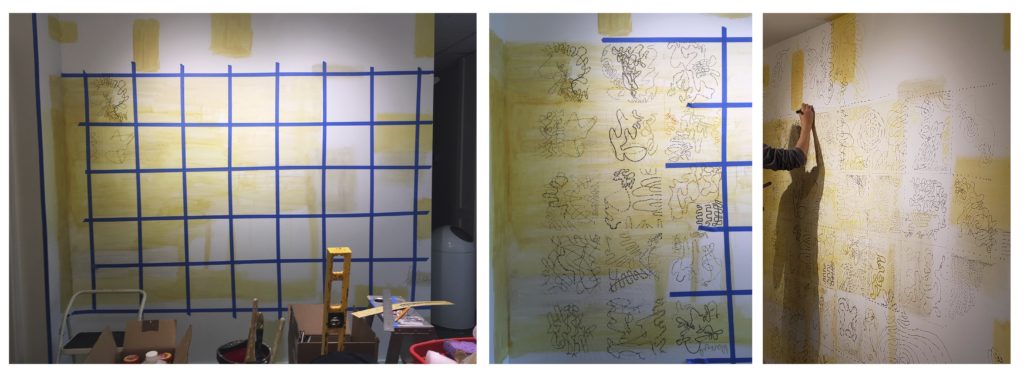
3 detail shots from Day 3: Work in progress on Wall 3, 2019, Turmeric powder, sacred ash, slaked lime, charcoal, water, isopropyl alcohol, hydrogen peroxide, and acrylic paint markers. Image courtesy Will Howcroft.
Created over three days after the 2019 Spring Equinox, I mapped my memories inspired by my visits to Hindu temples, and previous collaborative research done with the fractal genome structure[2]. This site and time specific wall drawing was made using two types of turmeric powder, sacred ash, slaked lime, charcoal, water, isopropyl alcohol, hydrogen peroxide, and acrylic paint markers.
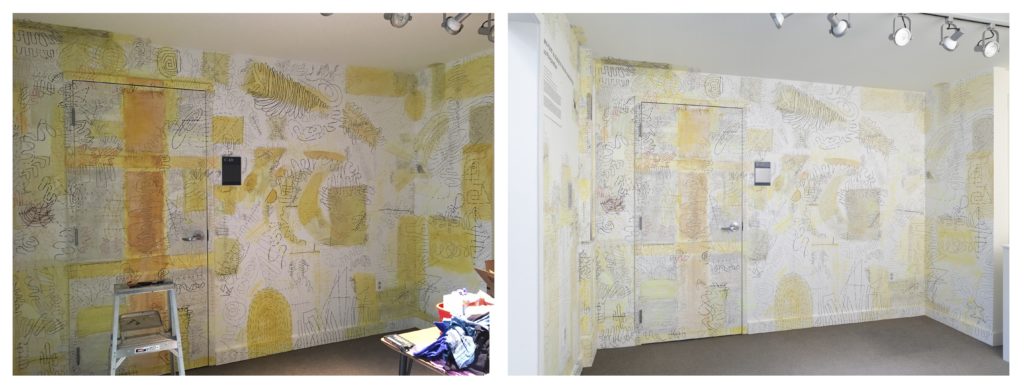
2 detail shots of Wall 2: Change from 27 March 2019 to 24 April 2019, 2019, Turmeric powder, sacred ash, slaked lime, charcoal, water, isopropyl alcohol, hydrogen peroxide, and acrylic paint markers. Image courtesy Will Howcroft.
The oldest, traditionally used, naturally occurring pigments were chosen to contrast with the stable artificial pigments of the acrylic markers. The viewing experience changed over time as these organic materials were absorbed by the walls, and exposed to air and light. After four months of viewing, the mural walls were painted over on August 6, 2019.
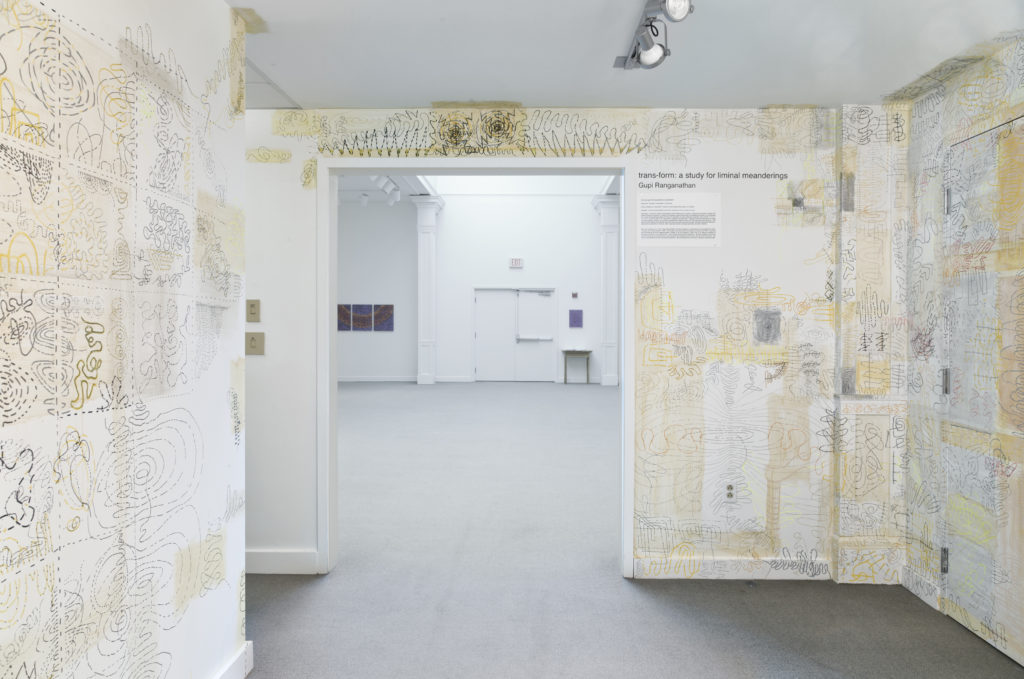
Detail shot of trans-form: a study for liminal meanderings showing view of (and from) the Trustman Gallery Anteroom Space, 2019, Turmeric powder, sacred ash, slaked lime, charcoal, water, isopropyl alcohol, hydrogen peroxide, and acrylic paint markers. Image courtesy Will Howcroft.
What is space? What is time? How do they intersect? How does materiality affect my movements, my perceptions of time, space, and intersections? What do I see, think, and feel? What do I remember? What do I build and unbuild? How do I transform?
[1] La Croix, Michael. (2003, September 29). Approaches to the Enumerative Theory of Meanders, https://math.mit.edu/~malacroi/Latex/Meanders.pdf
[2] Ranganathan, G., Aiden Lab & Aiden, E.L., (2021, November 17). Unfolding the Genome. Ground Works, https://groundworks.io/projects/86
Born and brought up in India, Gupi Ranganathan earned degrees in engineering (National Institute of Technology Trichy, BE, India,’89) and management (Indian Institute of Management Calcutta, MBA, ‘91), before moving to the United States in 1995. She studied art at Simmons University (BA, 2006), and received her MFA in painting and printmaking from the Massachusetts College of Art and Design in 2008. From 2009-2011, Gupi was artist-in-residence at the Broad Institute of MIT and Harvard.
Gupi has exhibited and shared her work focusing on the intersection of art and science in galleries and forums in the US, China, and India. Her work is represented in public and private collections. She currently works and lives in Wayland, Massachusetts.